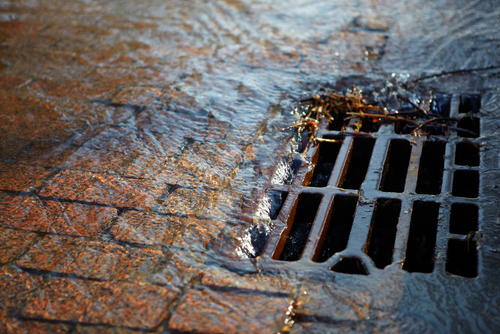 |
Smart growth is a process to improve how we build, rebuild, and manage our developed areas, emphasizing economic and environmental sustainability. Water quality is key among smart growth goals, and planners, regulators, and policymakers are embracing smart growth BMPs for stormwater locally and at state and regional levels.
The U.S. Environmental Protection Agency’s (EPA) smart growth program espouses nine “techniques” as stormwater BMPs, all or any of which can be used to achieve objectives tailored to meet site-specific needs.
1. Regional Planning incorporates stormwater considerations on a watershed-wide basis “as a way to comprehensively prevent and control water quality and quantity impairments.” This level of planning can include a range of elements, such as plans for:
- Regional transportation,
- Growth management,
- Source water protection,
- Economic development,
- Emergency response/evacuation, and
- Floodplain mapping.
2. Infill Development is the use of undeveloped properties within developed areas already served by transportation modes and infrastructure. Infill can be effective at reducing the development of previously undeveloped greenfield sites and may be part of local and/or regional land use plans, zoning ordinances, or development rules and building standards in areas without zoning. The practice can help ensure no additional impervious surfaces are created, which can significantly reduce the potential for increased stormwater runoff.
Join us on July 30 when you will learn how to determine when post-construction best management practices (BMPs) are required and much more. Register Now.
3. Redevelopment, in the context of smart growth, refers to the reuse of sites already covered with impervious surfaces and with minimal capacity for handling stormwater. These sites include vacant properties, including grey fields such as old commercial malls or warehouses, that are served by infrastructure not perceived to be contaminated. Many urban and rural areas have redevelopment strategies that include mixed-use rezoning, transportation enhancements, and/or incentives for redevelopment. Incentives may include not only economic development but also stormwater incentives as well. To further encourage redevelopment, older, more stringent and cost-prohibitive building codes may be replaced by new renovation or rehabilitation codes that make redevelopment economically viable.
4. Development Districts and Zoning Districts encompass large areas that require complex and coordinated management of rezoning, planning, and transportation to achieve “comprehensive and planning and urban design objectives in a specified area.” Examples include transit-oriented development (TOD) districts and business improvement districts (BIDs) that use innovative zoning and building codes that include stormwater-friendly benefits such as stipulating clustered/high-density development that increases walkability, thus minimizing the need for impermeable transportation infrastructure.
Join us on July 30 for an in-depth webinar on how to manage the post-construction phase of stormwater management projects. Register Today.
5. Tree and Canopy Programs are being used as basic elements in larger urban plans not only for landscaping and aesthetic purposes but also for minimizing heat island impacts and improving pedestrian environments. Tree programs and ordinances can positively influence stormwater management through erosion control, reducing water temperature, and by slowing the release of stormwater intercepted in the tree canopy, which helps minimize pollution, prevent flooding, and extend water availability.
6. Parking Policies reduce the number of parking places needed and thus the amount of impervious surfaces in any given area. Policies may include requirements for structured parking, such as multistory ramps, as well as reducing the number of spaces through mandated maximum ratios and shared parking areas (such as between a church and a movie theater that use parking at different times).
7. “Fix It First” Infrastructure Policies put spending on infrastructure repair ahead of new infrastructure, including transportation, sewer/water infrastructure, and public buildings. These policies, however, also encourage replacement of old, degraded infrastructure, including urban stormwater separation systems that have long-term benefits.
8. Smart Growth Street Designs support diverse modes of transportation and use diverse “green” techniques that mitigate stormwater runoff, such as eliminating curbs and gutters and using bioswales.
9. Stormwater Utilities are a growing trend that, like other utilities, can help local communities maintain and finance stormwater infrastructure. These utilities require passage of state legislation and, once created, can bill users in the same way they are billed for sewer and water services. Stormwater utilities can also offer rate reductions for users that implement stormwater practices (such as rain barrels), incentivizing stormwater BMPs and raising awareness.
